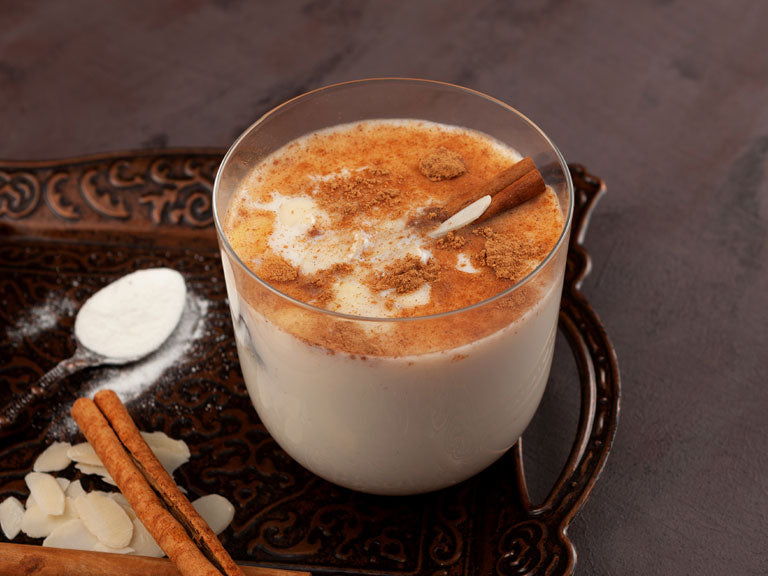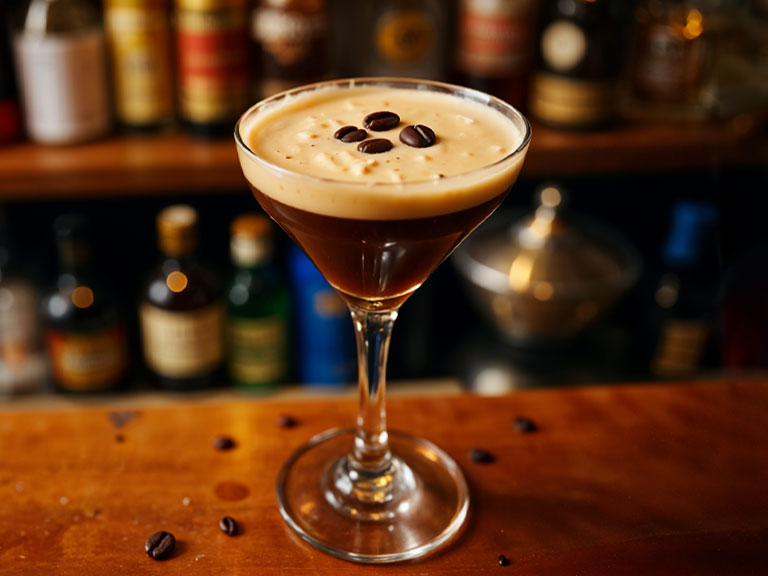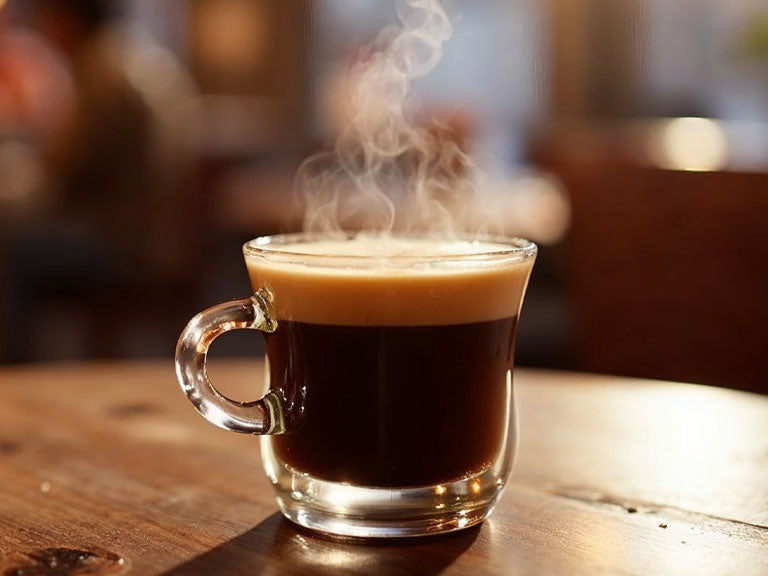

Latte art for home baristas
Wer liebt ihn nicht, den perfekten selbstgemachten Cappuccino mit filigraner Latte Art? Nicht immer ist Zeit und Lust da, um sich in das Lieblingscafé zu begeben, um vom Barista des Vertrauens ein Kaffeekunstwerk kredenzt zu bekommen. Damit Ihr zuhause nicht auf einen wunderschön anzusehenden Cappu mit Blatt, Tulpe der dem beliebten Herz verzichten müsst, erklären wir Euch in diesem Artikel Schritt für Schritt den Weg zur Latte Art. Wir verraten Euch welches Equipment Ihr dazu wirklich benötigt und geben Tipps für die Auswahl der Zutaten und eine Schritt-für-Schritt Anleitung für deine Kaffee-Kunst. Am Ende werdet Ihr zwei klassische Latte Art Motive und Muster zeichnen können.
Vorbereitung und Zubehör
Ohne perfekten Milchschaum keine Latte Art
Die bittere Wahrheit muss einmal gesagt werden: Ohne perfekten Milchschaum werdet Ihr niemals ein Herz, Blatt oder sonstige filigrane Bilder in Euren Espresso zaubern. Ein feinporiger, cremiger Milchschaum ist ein Muss für das Zeichnen von klaren Linien und das Setzen von Details in Euren koffeinhaltigen Kunstwerken. Mit einfachen Hilfsmitteln lässt sich allerdings kein tauglicher Milchschaum herstellen. Es bedarf einer Siebträgermaschine mit Dampflanze und viel Druck um einen creamy Milchschaum herzustellen, mit dem fantastische Zeichnungen möglich sind. Wer den Schritt zur heimischen Siebträgermaschine noch nicht gewagt hat, kann mit Handaufschäumern und elektrischen Milchaufschäumern relativ passable Ergebnisse erzielen. Zumindest im kleinen Rahmen wird Latte Art möglich sein. Von billigen batteriebetriebenen Milchaufschäumern raten wir Euch allerdings ab. Das ist unserer Meinung nach rausgeschmissenes Geld und beschert Euch mehr Ärger als vorzeigbare Kunst.

Welche Espressobohnen sind die Richtigen?
Die perfekte Latte Art beginnt natürlich bei der Auswahl der Espressobohnen. Viele schwören auf beste Ergebnisse bei der Verwendung von dunkel gerösteten Espressobohnen. Da es bei Latte Art um das “Zeichnen” mit Milch und Kaffee geht, steht der Kontrast der beiden Farben Braun und Weiß im Vordergrund. Ob es nun aber unbedingt ein starker Kontrast sein muss, liegt dabei im Auge des Betrachters. Daher empfehlen wir bei der Auswahl der Espressobohnen auf eine hervorragende Crema zu setzen, gute Qualität und natürlich den persönlichen Geschmack. Unser säurearmer Kaffee eignet sich wegen seiner fetten Crema perfekt für Latte Art und macht Euch sicher schnell zum Hobby Barista.
Unsere Tipps: Nicht unbedingt geeignet sind Kaffeebohnen, die für die Verwendung in Kaffeefiltermaschinen geröstet sind. Diese erzeugen für gewöhnlich kaum satte Crema und bieten sich für kontrastreiche Latte Art nicht wirklich an.
Jede Milch ist schäumbar!
Gibt es eine beste Milch für Milchschaum? Ja die gibt es: Kalte Milch! Ob Ihr nun eine Kuhmilch oder pflanzliche Alternativen nehmt, ist Euch überlassen und spielt in unseren Augen eine nebensächliche Rolle. Die eine lässt sich besser, die andere weniger gut schäumen. Kuhmilch hat eine höhere Toleranz bei der Temperatur, während die Pflanzenmilch es definitiv nicht zu heiß mag und bei zu heißem Aufschäumen gerne wieder in sich zusammenfällt. Unterschiedliche Fett- und Eiweißgehalte in den Milchvarianten sorgen für andere Verhaltensweisen beim Schäumen und liefern geschmacklich als auch in der Festigkeit des Schaums verschiedene Ergebnisse. Fakt ist allerdings, dass nur kalte Milch sich vernünftig schäumen lässt.

Welche Tassen eignen sich besonders gut für Latte Art?
Wirklich tolle Ergebnisse lassen sich vor allem in runden, glatten Tassen mit eine Größe zwischen 180 ml und 350 ml erzielen. Gänzlich ungeeignet sind Tassen oder Gläser mit extremen Kanten, Ecken oder rauen Oberflächen.
Ein Milchkännchen ist Pflicht, zwei sind die Kür
Die klassischen Milchkännchen sind aus Edelstahl und gibt es in vielen verschiedenen Größen und Farben, sowie unterschiedlichen Handgriffen und Ausgusstüllen. Für Latte Art braucht Ihr in jedem Fall mindestens ein Milchkännchen mit spitzer Ausgusstülle. Welche Größe Ihr nehmt hängt von der Menge bzw. Anzahl der zuzubereitenden Getränke ab. Da aber selten mehr als zwei Cappuccini zeitgleich aufgegossen werden, sollte ein Milchkännchen mit etwa 350 ml Füllmenge für den Einstieg als Homebarista vollkommen ausreichen. Mit der Zeit werdet Ihr genau wissen, wie viel Milchschaum Ihr immer benötigt und Euch vielleicht noch weitere Milchkännchen anschaffen.
Anleitung für Latte Art
Perfekte Latte Art ist eine Mischung aus ruhiger Hand, Kreativität und Schnelligkeit. Ab dem Zeitpunkt der fertig geschäumten Milch läuft ein Timeslot von maximal 30 Sekunden bevor sich der Milchschaum oben absetzt und die flüssige Milch es sich unter dem Schaum bequem macht. Dann besteht nur noch die Möglichkeit den Schaum mit einem Löffel auf den Kaffee oben drauf zu setzen. Ist natürlich besser als nichts, aber Latte Art schaut dann doch anders aus.

Aus diesem 30 Sekunden Timeslot ergibt sich eine wirklich gute Vorbereitung und die zwingende Reihenfolge bei der Herstellung von Latte Art einzuhalten: Erst den Espresso ziehen und währenddessen oder direkt im Anschluss die Milch schäumen.
Zubereitung in 3 Schritten
1. Espresso ziehen
Wer sich an Latte Art versucht, hat sicherlich bereits eine super Möglichkeit perfekten Espresso zu ziehen. Ob der Espresso mit einer Siebträgermaschine, Herdkännchen, Aeropress oder Vollautomaten hergestellt wird, ist für die Latte Art unerheblich. Mach es dir einfach und nutze die Black Label Coffee Kaffeebohnen für Vollautomaten. Wichtig ist tatsächlich eine schöne, satte Crema und der Geschmack.

2. Milch aufschäumen mit der Dampflanze der Siebträgermaschine
Unser Tipp vorweg: Wer noch keine Erfahrung im Milchaufschäumen mittels einer Dampflanze hat, kann um Ressourcen zu sparen, anstelle von Milch das Kännchen mit kaltem Wasser und einem Tropfen Spülmittel füllen. Damit kann wunderbar geübt werden, da das Aufschäumverhalten der Wasser-Spüli-Mischung dem der Milch ähnelt. noch mehr Zucker verwenden oder noch Sahne mit untermengen.
- Jetzt wird´s schaumig - Anleitung für den perfekten Milchschaum:
- Das Milchkännchen etwa halbvoll mit kalter Milch oder Milchalternativen aus dem Kühlschrank füllen.
- Die Dampflanze in die Milch führen und den Dampf voll aufdrehen. Fasst das Milchkännchen mit beiden Händen und zieht das Kännchen mit steigenden Schaum weiter nach unten.
- Achtet darauf immer knapp unterhalb der Milchoberfläche zu bleiben.
- Sobald sich der Inhalt des Kännchen fast verdoppelt hat, könnt Ihr für ein paar Sekunden noch das Milchkännchen leicht hoch und runter ziehen. So “rollt” die Milch im Kännchen und bekommt dadurch die cremige Konsistenz.
- Wenn das Milchkännchen für Euch zu heiß wird, ist das meist das Indiz für die richtige Temperatur der Milch und Ihr könnt den Dampf abdrehen.

Wichtig:
Wird die Milch zu heiß geschäumt, fällt der Milchschaum sehr schnell in sich zusammen. Die richtige Temperatur für Milchschaum liegt bei etwa 60-65 Grad.
Sollten noch zu viele große Bläschen im Milchschaum sein, könnt ihr mit dem Milchkännchen zwei bis dreimal flach auf die Arbeitsfläche klopfen. So zerplatzen die großen Blasen.
Ist die Milch fertig geschäumt, habt Ihr nur wenige Sekunden Zeit um Euer Kunstwerk zu gestalten. Optimalerweise wird der fertige Milchschaum sofort verwendet. Sollen gleich mehrere Getränke mit demselben Milchschaum verziert werden, muss die Milch in Bewegung bleiben. Damit in der Zeit bis zum Eingießen der Schaum schön cremig bleibt, schwenkt das Kännchen leicht und lasst die Milch darin rotieren.
Unser Tipp: Im Idealfall habt ihr zwei Milchkännchen. Die geschäumte Milch wird vor dem Eingießen in die Tasse noch in die zweite Milchkanne umgeschwenkt, wobei sich Milch und Schaum noch einmal schon vermengen. Dafür gießt vorsichtig, aber zügig die geschäumte Milch schräg in das zweite, ebenfalls schräg gehaltene Kännchen.

3. Zeichnen mit Milch
Nun wird es spannend, denn wir kommen zum eigentlichen Teil der Latte Art. Wie Ihr die Tasse beim Eingießen in den Händen haltet ist Geschmackssache. Einige Barista schwören darauf die Tasse ausschließlich unten herum festzuhalten, wieder andere nutzen nur den Henkel. Aber auch in einer stehenden Tasse lassen sich mit reichlich Übung und der perfekten Gießtechnik tolle Kunstwerke zaubern.

Nun wird es spannend, denn wir kommen zum eigentlichen Teil der Latte Art. Wie Ihr die Tasse beim Eingießen in den Händen haltet ist Geschmackssache. Einige Barista schwören darauf die Tasse ausschließlich unten herum festzuhalten, wieder andere nutzen nur den Henkel. Aber auch in einer stehenden Tasse lassen sich mit reichlich Übung und der perfekten Gießtechnik tolle Kunstwerke zaubern.
Die beliebtesten Latte Art Kunstwerke sind:
- Das Latte Art Blatt
- Die Tulpe im Milchschaum
- Das Herz auf dem Cappuccino
Der Alltime-Favourit: Das Latte Art Herz
Nun wird es spannend, denn wir kommen zum eigentlichen Teil der Latte Art. Wie Ihr die Tasse beim Eingießen in den Händen haltet ist Geschmackssache. Einige Barista schwören darauf die Tasse ausschließlich unten herum festzuhalten, wieder andere nutzen nur den Henkel. Aber auch in einer stehenden Tasse lassen sich mit reichlich Übung und der perfekten Gießtechnik tolle Kunstwerke zaubern.
- Tasse schräg halten und das Milchkännchen ziemlich nah (2-4 cm) an den Tassenrand halten
- Nun die cremige Milch mittig in den Espresso gießen. Die Milch sollte unter dem Espresso bzw. der Crema “verschwinden”
- Ist die Tasse etwa zu ⅔ gefüllt wird das Milchkännchen ganz nah an die Tasse geführt und weiterhin mittig eingegossen. Es entsteht ein weißer, größer werdender Milchfleck in der Mitte
- Nach und nach wird die Tasse in ein gerade Position geführt
- Ist die Tasse fast randvoll gefüllt, wird das Kännchen wieder höher gehalten und die Tasse steht komplett gerade
- Der Milchstrahl wird dadurch dünner und muss einmal quer durch den weißen Milchfleck gezogen werden
Voilá: Euer erstes Herz ist fertig!
Der Zeitlose: Das filigrane Blatt
Ein Blatt zu zeichnen ist nur unwesentlich schwerer als das Herz, macht aber so einiges daher. Die ersten Schritte sind ähnlich wie beim Herz, allerdings erfordert das Blatt ein wenig mehr Mut, Schwungtechnik und Geschwindigkeit.

- Zunächst wird die Tasse wie beim Herz schräg gehalten
- Milchkännchen nah (2-4 cm) an den Tassenrand halten und in kreisenden Bewegungen die Milch bis zur Hälfte der Tasse eingießen, dabei darf das Milchkännchen etwas höher gezogen werden
- Nun das Milchkännchen wieder ganz nah und mittig an die Crema heranführen
- Ab jetzt muss die Geschwindigkeit beim Ausgießen etwas erhöht werden und gleichzeitig schwenkt ihr schnell das Kännchen von links nach rechts
- Dabei zieht das Kännchen gleichmäßig wieder weiter nach oben, weg von der Tasse
- Sobald die Tasse fast komplett gefüllt ist, zieht mit dem nun dünnen Milchstrahl einmal quer durch das Blatt zum Tassenrand

Voilá: Ein filigranes Blatt!
Und jetzt seid Ihr dran!Sollte es beim ersten Mal nicht direkt klappen, bloß nicht den Mut verlieren und dran bleiben. Latte Art braucht sehr viel Übung, Geduld und Fingerspitzengefühl. Wir hoffen dir hat unser Beitrag Latte Art für Home-Baristas gefallen?
Tipp für Fortgeschrittene: Ihr könnt noch auf viele andere Heißgetränke, die mit Milch aufgegossen werden, tolle Kunstwerke zaubern. Zum Beispiel mit Latte Macchiato, heißer Schokolade oder Chai Latte. Dafür rührt einfach das Schoko- oder Chaipulver mit ein wenig heißem Wasser in der Tasse an und gießt dann die geschäumte Milch in oben beschriebener Weise in die Tasse.

MechthildErhard
Copywriter / Content Creator
Mechthild Erhard is a self-confessed coffee nerd and has been successfully running the bambule.Kaffeebar in Cologne since 2013. With the necessary caffeine in her blood, she is a content creator for our coffee magazine, writing specialist articles on the preparation and enjoyment of coffee beans. On top, of course, with the best tips for home baristas.




